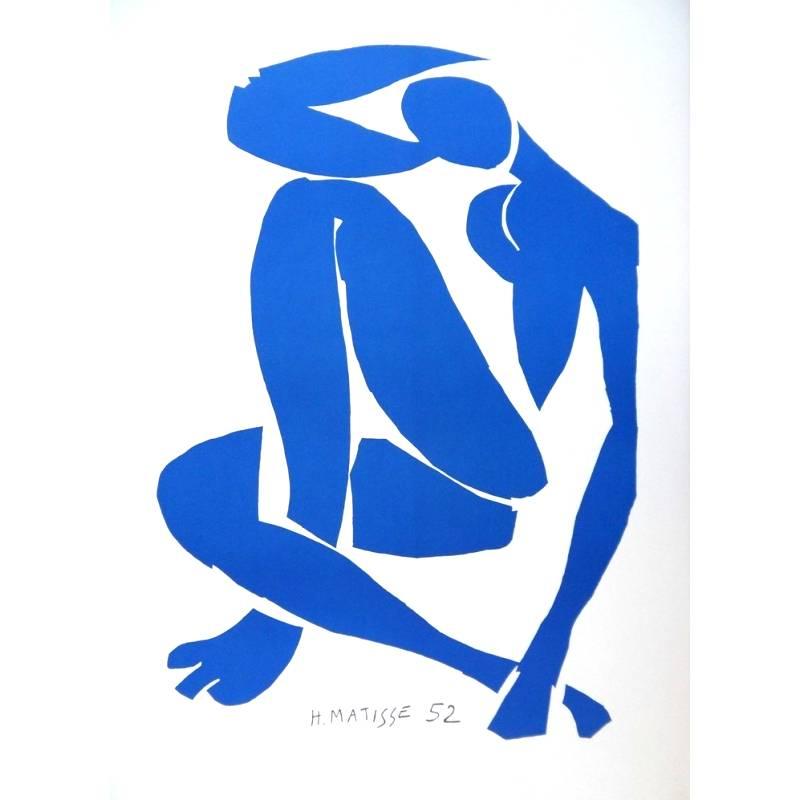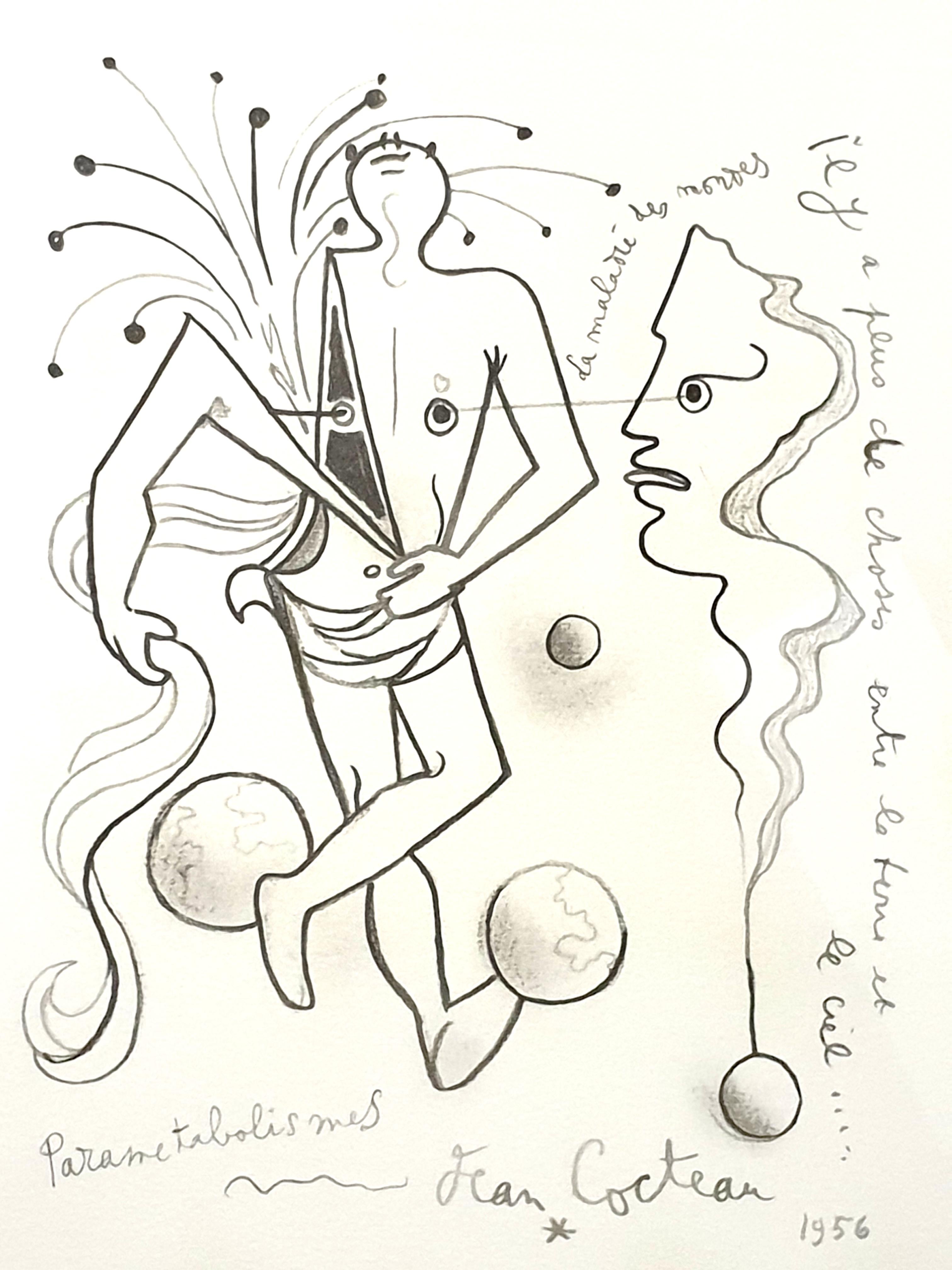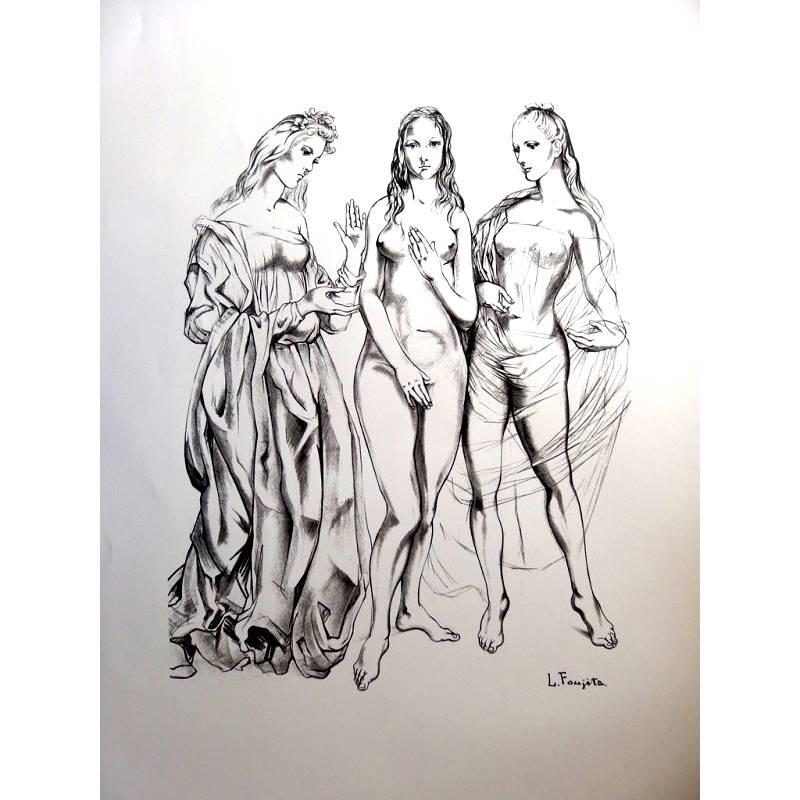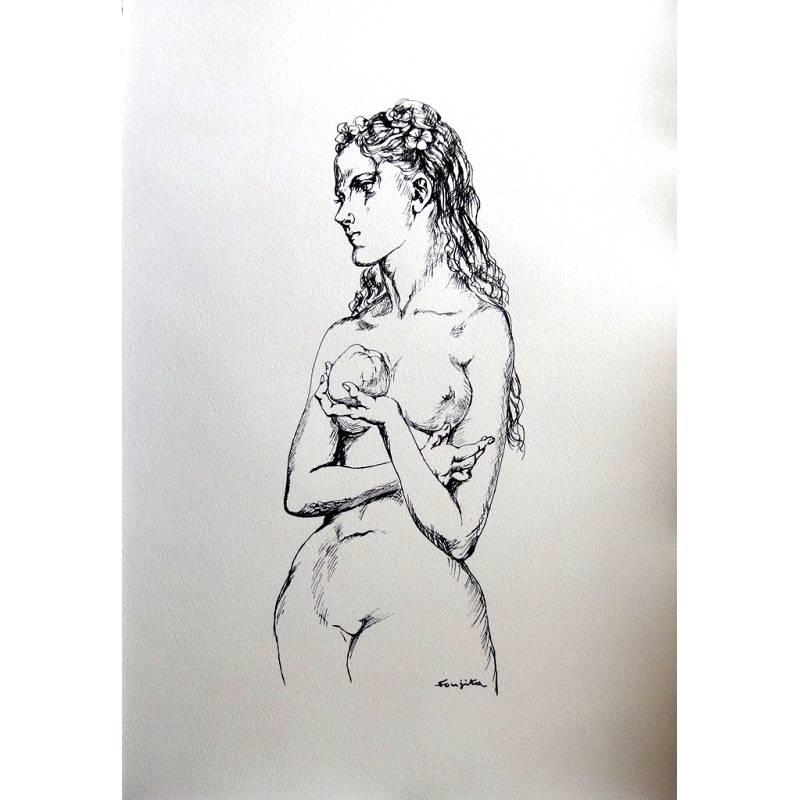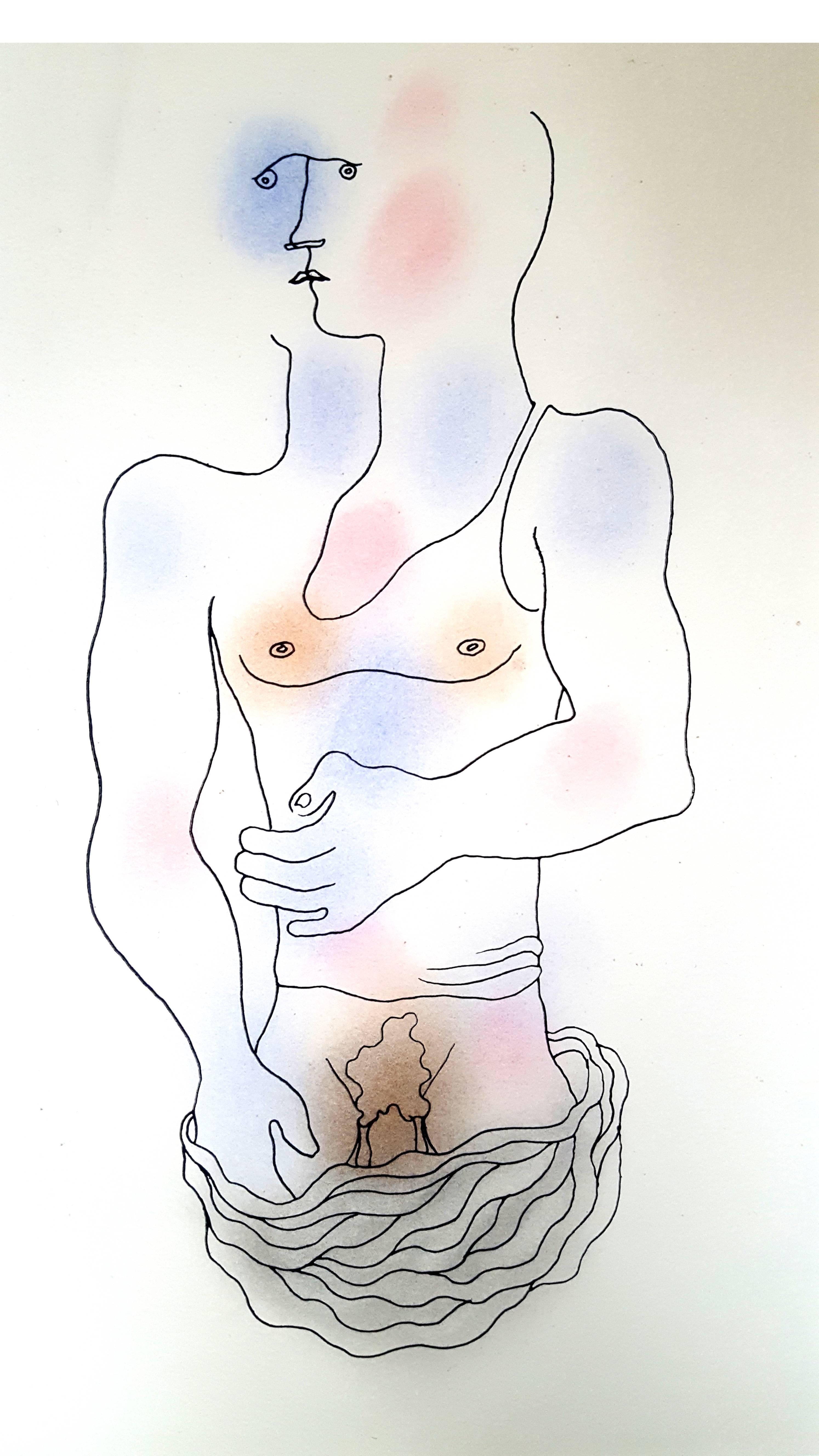Items Similar to The Human Comedy - Lithograph
Want more images or videos?
Request additional images or videos from the seller
1 of 5
(after) Pablo PicassoThe Human Comedy - Lithograph1954
1954
About the Item
after Pablo Picasso - The Human Comedy - Lithograph
Signed and dated in the plate
Dimensions: 32 x 24 cm
This artwork is a lithograph in colors on wove paper after a drawing by Pablo Picasso
Printed by Mourlot, Paris.
Pablo Picasso
Picasso is not just a man and his work. Picasso is always a legend, indeed almost a myth. In the public view he has long since been the personification of genius in modern art. Picasso is an idol, one of those rare creatures who act as crucibles in which the diverse and often chaotic phenomena of culture are focussed, who seem to body forth the artistic life of their age in one person. The same thing happens in politics, science, sport. And it happens in art.
Early life
Born in Malaga, Spain, in October of 1881, he was the first child born in the family. His father worked as an artist, and was also a professor at the school of fine arts; he also worked as a curator for the museum in Malaga. Pablo Picasso studied under his father for one year, then went to the Academy of Arts for one year, prior to moving to Paris. In 1901 he went to Paris, which he found as the ideal place to practice new styles, and experiment with a variety of art forms. It was during these initial visits, which he began his work in surrealism and cubism style, which he was the founder of, and created many distinct pieces which were influenced by these art forms.
Updates in style
During his stay in Paris, Pablo Picasso was constantly updating his style; he did work from the blue period, the rose period, African influenced style, to cubism, surrealism, and realism. Not only did he master these styles, he was a pioneer in each of these movements, and influenced the styles to follow throughout the 20th century, from the initial works he created. In addition to the styles he introduced to the art world, he also worked through the many different styles which appeared, while working in Paris. Not only did he continually improve his style, and the works he created, he is well known because of the fact that he had the ability to create in any style which was prominent during the time.
Russian ballet
In 1917, Pablo Picasso joined the Russian Ballet, which toured in Rome; during this time he met Olga Khoklova, who was a ballerina; the couple eventually wed in 1918, upon returning to Paris. The couple eventually separated in 1935; Olga came from nobility, and an upper class lifestyle, while Pablo Picasso led a bohemian lifestyle, which conflicted. Although the couple separated, they remained officially married, until Olga's death, in 1954. In addition to works he created of Olga, many of his later pieces also took a centralized focus on his two other love interests, Marie Theresa Walter and Dora Maar. Pablo Picasso remarried Jacqueline Roque in 1961; the couple remained married until his death 12 years later, in 1973.
Work as a pacifist
Pablo Picasso was a pacifist, and large scale paintings he created, showcased this cry for peace, and change during the time. A 1937 piece he created, after the German bombing of Guernica, was one such influential piece of the time. Not only did this become his most famous piece of art work, but the piece which showed the brutality of war, and death, also made him a prominent political figure of the time. To sell his work, and the message he believed in, art, politics, and eccentricity, were among his main selling points.
Conflicting with social views
Many things Pablo Picasso did during the 1950s, conflicted with the general public. Viciousness towards his children, exaggerated virility towards women, and joining the Communist party, were some of the many scandals which he was involved in during his lifetime. Although most of the things he did were viewed negatively by a minority of the general public, admirers of Pablo Picasso turned a blind eye, and still accepted him as a prominent figure in their society. Following the end of WWII, Pablo Picasso turned back towards his classic style of work, and he created the "Dove of Peace." Even though he became a member of the Communist party, and supported Stalin and his political views and rule, Pablo Picasso could do no wrong. In the eyes of his admirers and supporters, he was still a prominent figure, and one which they would follow, regardless of what wrongs he did. He was not only an influence because of the works he created, but he was also an influential figure in the political realm.
Influence outside of art
Although Pablo Picasso is mainly known for his influence to the art world, he was an extremely prominent figure during his time, and to the 20th century in general. He spread his influences to the art world, but also to many aspects of the cultural realm of life as well. He played several roles in film, where he always portrayed himself; he also followed a bohemian lifestyle, and seemed to take liberties as he chose, even during the later stages of his life. He even died in style, while hosting a dinner party in his home.
Collection of work
Pablo Picasso is recognized as the world's most prolific painter. His career spanned over a 78 year period, in which he created: 13,500 paintings, 100,000 prints and engravings, and 34,000 illustrations which were used in books. He also produced 300 sculptures and ceramic pieces during this expansive career. It is also estimated that over 350 pieces which he created during his career, have been stolen; this is a figure that is far higher than any other artist throughout history.
Sale of his works
Pablo Picasso has also sold more pieces, and his works have brought in higher profit margins, than any other artist of his time. His pieces rank among the most expensive art works to be created; with a price tag of $104 million, Garson a la Pipe, was sold in 2004.
Although he had a conflicting lifestyle, Pablo Picasso was admired by many, and was one of the most influential figures of his time. Not only during his life, but also after his death, he is still one of the most well known artists, and political figures, of his time. With thousands of pieces to his name, and art works which have been seen by millions, around the world, he has been a great influence to society, he has influenced the art world, and he introduced many new styles of art, which helped shape modern art, and modern styles artists follow today.
- Creator:(after) Pablo Picasso (1881 - 1973, Spanish)
- Creation Year:1954
- Dimensions:Height: 9.45 in (24 cm)Width: 12.6 in (32 cm)Depth: 0.04 in (1 mm)
- Medium:
- Movement & Style:
- Period:
- Condition:
- Gallery Location:Collonge Bellerive, Geneve, CH
- Reference Number:1stDibs: LU16122170833
About the Seller
4.9
Gold Seller
These expertly vetted sellers are highly rated and consistently exceed customer expectations.
Established in 2015
1stDibs seller since 2015
908 sales on 1stDibs
Typical response time: 1 hour
- ShippingRetrieving quote...Ships From: Collonge Bellerive, Geneve, Switzerland
- Return PolicyA return for this item may be initiated within 7 days of delivery.
More From This SellerView All
- after Henri Matisse, "Sitting Blue Nude"By Henri MatisseLocated in Collonge Bellerive, Geneve, CHLithograph after Henri Matisse - Sitting Blue Nude Artist : after Henri MATISSE Edition of 200 76 x 56 cm With stamp of the Succession Matisse References : Artvalue - Succession Ma...Category
1950s Modern Nude Prints
MaterialsLithograph
- after Henri Matisse - Zulma - LithographBy Henri MatisseLocated in Collonge Bellerive, Geneve, CHafter Henri Matisse - Zulma - Lithograph Artist : Henri MATISSE posthumous edition of 200 after the original paper cut-out signature printed in the plate 80 x 60 cm With stamp of t...Category
Mid-20th Century Modern Nude Prints
MaterialsLithograph
- Jean Cocteau - Parametabolismes - Original LithographBy Jean CocteauLocated in Collonge Bellerive, Geneve, CHJean Cocteau - Parametabolismes - Original Lithograph Signed "Jean Cocteau" in the plate and dated 1956 in the plate. 39 x 29 cm Edition: 500 Hand numbered Stamp signed lower rightCategory
1950s Modern Nude Prints
MaterialsLithograph
- Léonard Foujita - The Three Graces - Original LithographBy Léonard Tsugouharu FoujitaLocated in Collonge Bellerive, Geneve, CHLéonard Foujita (French/Japanese, 1886–1968) The Three Graces Original Lithograph 76 x 54 cm Signed in the plate Reference: Sylvie Buisson réf. #60.28 (vol. 1, p.531) Léonard ...Category
1960s Modern Nude Prints
MaterialsLithograph
- Léonard Foujita - Eve With an Apple - Original LithographBy Léonard Tsugouharu FoujitaLocated in Collonge Bellerive, Geneve, CHLéonard Foujita Eve With an Apple Original Lithograph Signed in the plate 50 x 38 cm Reference: Sylvie Buisson #60.29 Léonard Foujita (French/Japanese, 1886–1968) The Three Grace...Category
1930s Modern Nude Prints
MaterialsLithograph
- Jean Cocteau - White Book - Original Handcolored LithographBy Jean CocteauLocated in Collonge Bellerive, Geneve, CHJean Cocteau White Book - Autobiography about Cocteau's discovery of his homosexuality. The book was first published anonymously and created a scandal. Original Handcolored Lithograph...Category
1930s Modern Nude Prints
MaterialsLithograph
You May Also Like
- The Red Host - Lithograph by Egon Schiele - 2007By Egon SchieleLocated in Roma, ITThe Red Host is a colored lithograph from the portfolio " Erotica" by Egon Schiele. It deals with a reproduction of the homonym artwork realized in watercolor and pencil by the Aus...Category
Early 2000s Modern Portrait Prints
MaterialsLithograph
- Schiele Drawing a Nude Model in front of a Mirror-Lithograph-2007By Egon SchieleLocated in Roma, ITSchiele Drawing a Nude Model In Front of a Mirror is a beautiful lithograph from the portfolio " Erotica " after Egon Schiele. It is a reproduction of the homonym pencil drawing re...Category
Early 2000s Modern Portrait Prints
MaterialsLithograph
- Female Nude - Lithograph - 2007By Egon SchieleLocated in Roma, ITFemale Nude is a colored lithograph from the portfolio " Erotica" by Egon Schiele. It deals with a reproduction of the homonym artwork realized in gouache, watercolor, and black crayon by the Austrian artist in 1910. Edition of 1200 copies , printed by Marinoni-Voirin, and published by Editions Anthèse, Paris, 2007. In perfect conditions: as good as new. Today, the original drawing is preserved at the Albertina Museum, in Vienna. This wonderful and colorful plate...Category
Early 2000s Modern Portrait Prints
MaterialsLithograph
- Nude Girl with Raised Arms - Lithograph - 2007By Egon SchieleLocated in Roma, ITNude Girl With Raised Arms is a beautiful lithograph from the portfolio " Erotica " after Egon Schiele. It is a reproduction of the homonym pencil drawing ...Category
Early 2000s Modern Portrait Prints
MaterialsLithograph
- The Red Host - Lithograph After Egon Schiele - 2007By Egon SchieleLocated in Roma, ITThe Red Host is a colored lithograph from the portfolio " Erotica" by Egon Schiele. It deals with a reproduction of the homonym artwork realized in watercolor and pencil by the Aus...Category
Early 2000s Modern Portrait Prints
MaterialsLithograph
- The Red Host - Lithograph After Egon Schiele - 2007By Egon SchieleLocated in Roma, ITThe Red Host is a colored lithograph from the portfolio " Erotica" by Egon Schiele. It deals with a reproduction of the homonym artwork realized in watercolor and pencil by the Aust...Category
Early 2000s Modern Portrait Prints
MaterialsLithograph
Recently Viewed
View AllMore Ways To Browse
Children Portraits In The Met
Used Crucible
Picasso Lithograph Still Life
Lithographs Dove
War And Peace Lithograph
Guernica Picasso
Women And Dove
Picasso Dove
Picasso Mourlot 1959
Communist Russia
Guernica Pablo Picasso
1937 German Portrait
Pablo Picasso Peace
Vintage Ballerina Prints
Vintage Ballerina Print
Rose Ballet
Love Over Rules
Picasso Guernica Print
